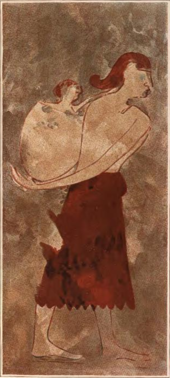
There are about 40 languages

It is also one of the oldest language groups in the world
Morphology and Grammar:
Nouns distinguish grammatical cases, of which there may originally have been only two: absolutive and nominative. Nouns also indicate number and gender (masculine and feminine, often semantically re-arranged in terms of augmentative and diminutive). Plural formatives are plentiful. Some Cushitic languages, such as Somali and Rendille (Kenya), also have a feature known as “gender polarity,” in which some nouns have one gender in the singular and another in the plural.
Verbal morphology is complex and is not uniform. New verbs may be formed by adding affixes, which may occur in combination with each other. Affixes can indicate whether a verb is passive, causative, or reflexive, among other things. To denote repeated action, the verb stem (or parts of it) may be reduplicated.
A root and pattern system is common in the Afro-Asiatic phylum; stems made up of consonants (the root) provide a word with its basic lexical meaning, while the vowel sequence within the word (the pattern)—sometimes involving the addition of prefixes—denotes grammatical categories such as number, mood, aspect, and tense. This system is evident in archaic and some living Cushitic languages, as in Somali, where the forms na-qaan ‘we know/we will know’ or ni-qiin ‘we knew’ are based on the root n-q--n.
Subject marking by prefixed pronouns survived as a regular pattern in Beja and Saho-Afar; elsewhere it is limited to certain verbs or is lost completely, as in South Cushitic. Usually another conjugational pattern prevails, in which prefix-conjugated auxiliaries are postponed to the main verb, creating a pseudo-suffixal conjugation type, as in Oromo tum-na ‘we forge’ and tum-ne ‘we forged.’ East and South Cushitic languages typically display “selectors” (also referred to as “preverbal clitic clusters”); these are highly complex units that anticipate inflectional categories of the following verb. In South Cushitic Burunge, for instance, “selectors” provide up to eight functional slots to mark grammatical categories such as clause type (e.g., conditional, concessive, subject focus, or relative), case (e.g., comitative, instrumental), oblique relative, oblique case focus, tense (e.g., preterite, habitual), sequence, and direction of action. For example, in the Burunge clause
ʾana |atiyoo haguróo fa|a |agima
(first person singular subject + spoon + “selector” + broth + eat-first person singular-imperfective)
‘I used to eat the broth with (a) spoon’
the “selector” haguróo (from *ha-gu-ri-óo; the asterisk denotes a hypothetical reconstruction of an earlier form) comprises the non-third person subject ha; the third person singular, masculine object gu; the comitative case ri; and the habitual tense óo.
Morphophonemic processes such as assimilation, elision, and fusion may change the resulting phonetic form considerably, as in the case of the Burunge selector lugoo (from *la-hi-gu-oo, comprising an optative clause + third person singular subject + second person singular masculine object + prospective tense).
The usual word order is subject–object–verb (SOV). However, practically any constituent of the sentence can be made prominent by one means or another, including changes of constituent order.
-H. Ekkehard Wolff

@The Cushtic One @oday1kenobi @SultanuuFicaan
The languages spoken in the ancient Kerma Culture (present-day southern Egypt and northern Sudan) and in the Savanna Pastoral Neolithic in the Great Lakes region are thought to have belonged to the Cushitic branch of Afroasiatic.
The Kerma Culture was an early civilization that flourished from around 2500 BCE to about 1500 BCE in Nubia, upper egypt
WE TRULY WUZ KINGS N SHIET
Proto cushitic words:
http://starling.rinet.ru/cgi-bin/re...&morpho=0&basename=\data\semham\lecet&first=1
Last edited:













